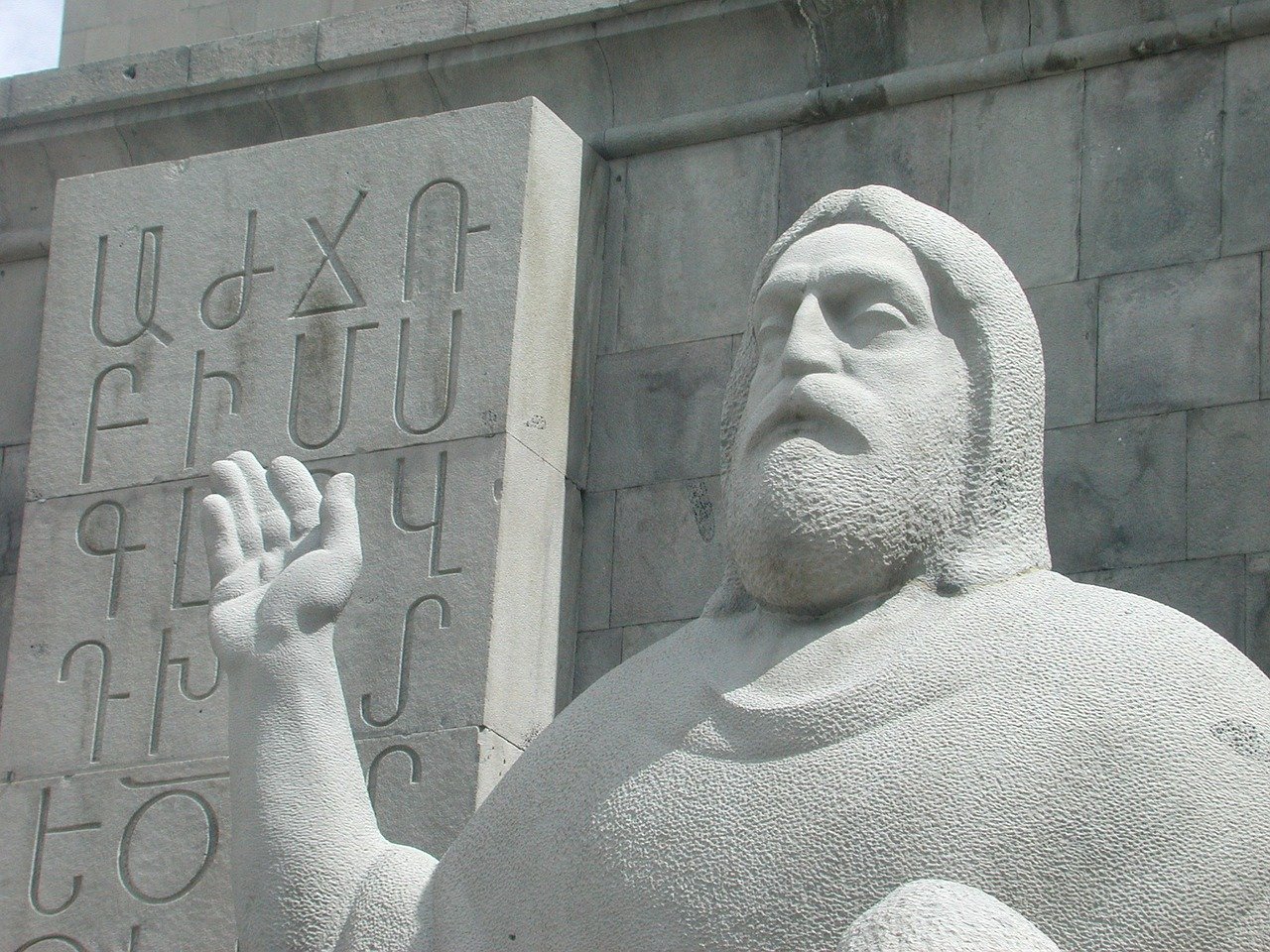Armenia is a land of beautiful scenery, poetry, and magnificent architecture. It’s no surprise, then, that the names of its people can be just as lovely. You may know that many Armenian last names end with a suffix like ‘-ian,’ but do you know why? And what other cultural legacies have shaped the country’s most popular names?
Armenian First Names
Armenian first names often, but not always, draw from the region’s rich mythology, history, and religious traditions. Biblical names are especially common for boys—you might recognize David, Peter, Samuel, or Jacob, or as they are rendered in Armenian, Davit, Petros, Samvel, and Hakob. Also popular are the names of Armenia’s legendary heroes, such as Hayk, Ara, and Vardan. Still more reference places important to the Armenian people, like Ararat or Tigran.
Girls’ names in Armenia draw from a similar blend of cultural traditions. Biblical names like Maria, Mary, Eva, and Miriam always rank highly, along with Anahit, an ancient moon goddess. Others evoke beautiful imagery, such as Arpi, “rising sun,” or Nare, a name that alludes to fire and pomegranates as well as an ancient monastic village.
Of course, besides these favorites, there are thousands more Armenian names still in use today, each with their own meaning and story to tell.
Armenian Surnames
It’s usually not hard to spot an Armenian surname; most end with a suffix like ‘-ian,’ ‘-yan,’ or ‘-jan.’ Like other cultures, surnames in Armenia were traditionally a way to identify where a person comes from. The ‘-ian’ suffix is very similar to the ‘-son’ suffix seen in many cultures from the Germanic language family. A modern person named Peter Davidson likely has a male ancestor named David; Petros Davidian could say the same.
Armenian surnames are not always tied to a person. They can also state where a family was from, what trade they followed, and other descriptors. Other suffixes do exist, but they are rare and typically the names of nobility or the result of families living outside of Armenian-speaking regions. Persian, Russian, and Turkish roots are all found in Armenian surnames.
Armenian Naming Conventions and Losses in the Modern Era
If you are researching Armenian names as part of a genealogy project, remember that social upheaval may have impacted the names of recent Armenian generations. During the decline of the Ottoman Empire in particular, persecuted Armenian families sometimes adopted Turkish names to better blend in with their neighbors. A similar, though less violent, process occurred as many Armenians emigrated to countries like the United States. By choice or not, families entering the USA often saw their names altered to conform to English naming conventions.
Popular Armenian Names Today
According to published statistics, Nare for girls and Davit for boys were the most popular Armenian baby names in both 2012 and 2019. In 2019, the most popular female baby names in Armenia were listed as:
Nare
Maria
Arpi
Eva
Angeline
Others included Mane, Mari, Anahit, Elen and Mariam.
Male baby names ranked as follows:
Davit
Narek
Hayk
Mark
Tigran
Others included Alex, Michael, Artur, Gor and Aren.
References
Bakalian, Anny. Armenian-Americans: From Being to Feeling American. Taylor & Francis, 2017.
Kocharyan, Stepan. “Armenians Mostly Prefer Nare and Davit as Baby Names.” Armenpress, Armenpress, 5 Feb. 2020, armenpress.am/eng/news/1003752.html.
Mirzoyan, Vera. “Armenian Names: Popular Armenian Boys’ and Girls’ Names.” Armenia Discovery, Armenia Discovery, 26 July 2019, armeniadiscovery.com/en/articles/armenian-names-popular-armenian-boys-and-girls-names.
Solomon, Susan. Armenia - Culture Smart! The Essential Guide to Customs & Culture. Kuperard, 2009.
Seferian, Nareg. “Seferian: What’s in an Armenian Name?” The Armenian Weekly, The Armenian Weekly, 27 Jan. 2011, armenianweekly.com/2011/01/27/seferian-what%E2%80%99s-in-an-armenian-name.
“Which Are Most Common Armenian Names?” Armenia News, Armenia News, news.am/eng/news/118484.html. Accessed 27 Aug. 2012.
About TOTA
TOTA.world provides cultural information and sharing across the world to help you explore your Family’s Cultural History and create deep connections with the lives and cultures of your ancestors.


